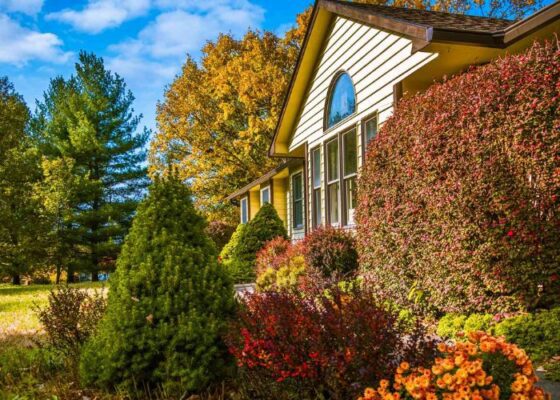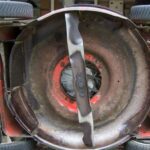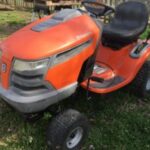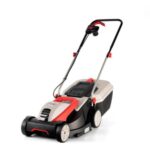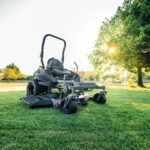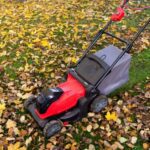As a homeowner in Oklahoma who loves lawn care and has been doing it for over seven years, I can tell you from personal experience how hard it can be to take care of your yard in the fall. As the weather changes, your yard is put to the test by things like early frosts, cooler temperatures, and less rain. Read below about “Fall Lawn Care Tips Every Oklahoma Homeowner Needs to Know”.
If you don’t prepare your yard properly in the fall, your grass will not stay healthy over the winter and will not grow back quickly in the spring. When you don’t do some important maintenance tasks in the autumn, your lawn is more likely to get weeds, diseases, and lose quality over the winter.
The good news is that if you take good care of your yard in the fall, it will be much easier to take care of it again next spring. Here are the best lawn care tips I can give people in Oklahoma this fall:
Table of Contents
Plant Food at the Right Time
It’s important to fertilize in the fall, but the right time is very important. I think you should fertilize around Labor Day, when the weather starts to get cooler but the grass is still growing. Pick a nitrogen-rich fertilizer to help your grass grow quickly and store carbs before winter slumber. Organic nutrients that work slowly are best.
In early September, I’ve had the best luck when I use natural fertilizers in a ratio like 12 to 6 or 18 to 0. So the nitrogen has plenty of time to work its way into the soil and roots before the plants start to grow less quickly. Do not fertilize in late October, as this can cause damage or disease in the winter.
Control Fall Weeds
Weed control in the fall is very important if you don’t want weeds to take over your yard over the winter. Grass that is too thin or stressed out can quickly be taken over by broadleaf weeds like dandelions, clover, and chickweed. Broadleaf pesticide works best when used in early fall, when weeds are still young and growing.
I suggest using selective pesticides that have dicamba or 2,4-D in them. Use it on a quiet day when the temperature is between 60 and 80 degrees for the best results. Broadleaf weeds can all be killed with combination items like Trimec. Carefully read and follow the directions on the package whenever you use herbicides.
Corn gluten meal is another good organic choice that stops weeds from sprouting. In mid-September, use this natural pre-emergent insecticide to get rid of winter annual weeds like chickweed and henbit. The important thing is to do something before fall, when weeds get out of hand.
Keep Mowing Until Grass Stops Growing
It’s important to keep mowing your lawn regularly through the fall. When you mow, don’t cut off more than a third of the grass blade’s height at a time. As the plant starts to grow less quickly, slowly raise the cutting height until it reaches 3 to 3.5 inches.
When the grass stops growing all the way, which usually happens in November, I like to mow the lawn for the last time this fall. For this last cut, the cutting height should be set to its highest level. Let the grass go to sleep at a higher level. This will help protect the tops and roots over the winter. When frost turns the grass blades brown, you should stop cutting the grass.
Aerate Compacted Soil
Aerating fields with packed-down soil is best done in the fall. An aeration machine is used to make small holes in the ground for air flow. Making the dirt less dense in this way lets more air, water, and nutrients get to the grass roots. Cool-season plants, like fescue, do best when the soil is broken up early to mid-fall.
Core aeration, in which plugs of grass and dirt are taken out, is what I suggest. A core aerator is the best way to get plugs out of the ground that are 2 to 3 inches deep and spaced 2 inches apart. Cores should be left on the ground to break down. To get the most out of the benefits, cover any thin or bare spots after ventilation.
Rake Up Fall Leaves
For a healthy fall lawn, you need to pick up the leaves that have dropped. Leaving too many leaves on the grass will block the sun and make fungus and disease problems worse. In the fall, I like to regularly rake the leaves as they fall. You can recycle leaves or use them as mulch in flower beds.
If you want to get more leaves, use a lawn mower with a bagger that vacuums up the grass as you mow. Make sure that big piles of leaves don’t stay on the grass for too long. Getting rid of them quickly stops smothering, die-off, and dead patches.
Trim Shrubs and Trees
It’s easier to trim back trees and bushes that have gotten too big in the fall. Any branches or limbs that hang over the ground should be cut back. The grass can get more sunshine this way.
To keep everyone safe, check your trees and cut off any dead or broken branches that might fall during the winter. Cutting back any perennials that grow in the fall is also a good idea. If you do this yard job now, you won’t have to prune as much in the spring.
Adjust the Irrigation Schedule
In the fall, when the weather cools down and plants grow more slowly, fields need to be watered less often. I tell people to water their lawns no more than once or twice a week and cut back on the automatic sprinkler run times by about 25%.
As the date of the first frost gets closer, water less and less. For the last time this fall, water the soil until it’s 4-6 inches deep. This should be done before the ground freezes. Less watering the grass helps it go dormant slowly, which keeps it from dying in the winter and gets it ready for cooler weather.
Apply Winterizer Fertilizer
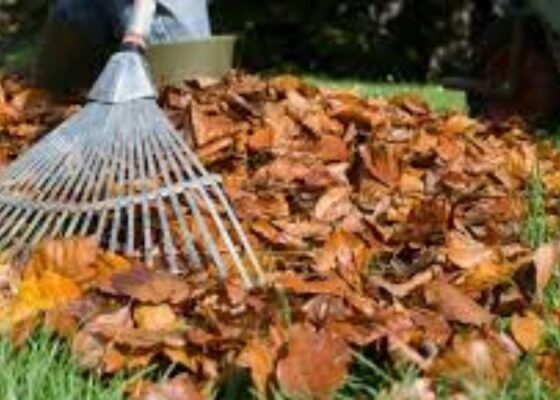
I suggest using one last type of fertilizer, a winterizer fertilizer, right before the ground freezes. This gives grass plants important nutrients that help them make it through the winter.
Look for a winterizer that has potassium, phosphorus, and at least 30% slow-release nitrogen in it. This is the last food boost for the grass before spring. When the soil temperature goes below 55 degrees F and grass growth slows down, it’s time to use winterizer.
Fertilizer that works in the winter stores nitrogen in the grass plants’ roots and tops. This reserve will help the grass grow back faster in the spring. The potassium also makes it easier to handle cold weather during the winter.
Check for Disease and Pests
As you do your fall housework, keep an eye out for disease signs and yard pests. Things like brown patch fungus can happen when it’s cool and wet. When illnesses are caught early, they can be treated.
Also, get rid of fall bugs like white grubs that eat grass roots and hurt them. To get rid of grubs in the soil without using harsh chemicals, I use helpful nematodes in September or October. Checking for pests now will save you trouble later.
Consider Overseeding with Clover
Spreading clover over your grass next year is a great way to cut down on mowing time and upkeep. I like white Dutch clover a lot because it stays low, fixes nitrogen, and looks good next to grass. Clover is also not hurt by dog urine.
Cut the grass short and fill in any bare spots with a mix of 50/50 clover and grass seeds in the early fall for the best results. The cool-season grass and the clover will grow well together and cover up any bare spots. This makes a natural, healthy lawn that needs less fertilizer, water, and mowing.
Fall Lawn Care Pays Off
Even though yard care tasks in the fall may seem like a lot of work, remember that all of your hard work will pay off big time in the spring. If you do the right care on your lawn in the fall, it will stay healthy all winter and grow back faster in the spring.
This fall, feed, aerate, overseed, and get rid of weeds. Next year, your grass will grow back thick and beautiful. The work you do now will also save you time when it’s time to take care of your yard in the spring. Just make sure you take care of your yard this fall before the ground freezes! I hope you like reading “Fall Lawn Care Tips Every Oklahoma Homeowner Needs to Know”.
Thanks for these tips. I hope they help you keep your yard looking great this fall. If you have any more questions, please let me know. I’m always happy to talk about how I take care of lawns in this area. I hope everything goes well for you and your yard this fall and beyond!

Barry, the expert behind LawnInspection.com, holds a Master’s degree in Horticulture and brings over 20+ years of hands-on experience in landscaping and lawn care. With certifications in sustainable lawn management, Barry is dedicated to providing readers with authoritative insights and practical tips for maintaining lush, healthy lawns. His extensive knowledge and commitment to excellence ensure that every piece of advice on LawnInspection.com helps transform your lawn into a green oasis with proven, eco-friendly practices. Connect with Barry on social media: Instagram and Facebook.

